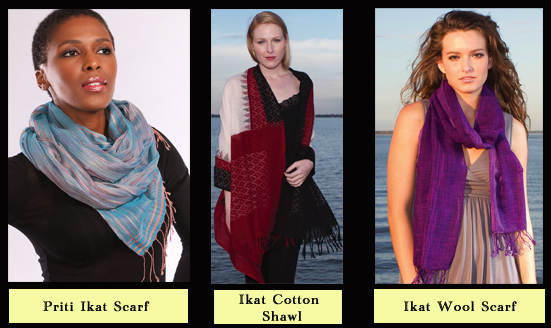Spotlight on GUJARAT
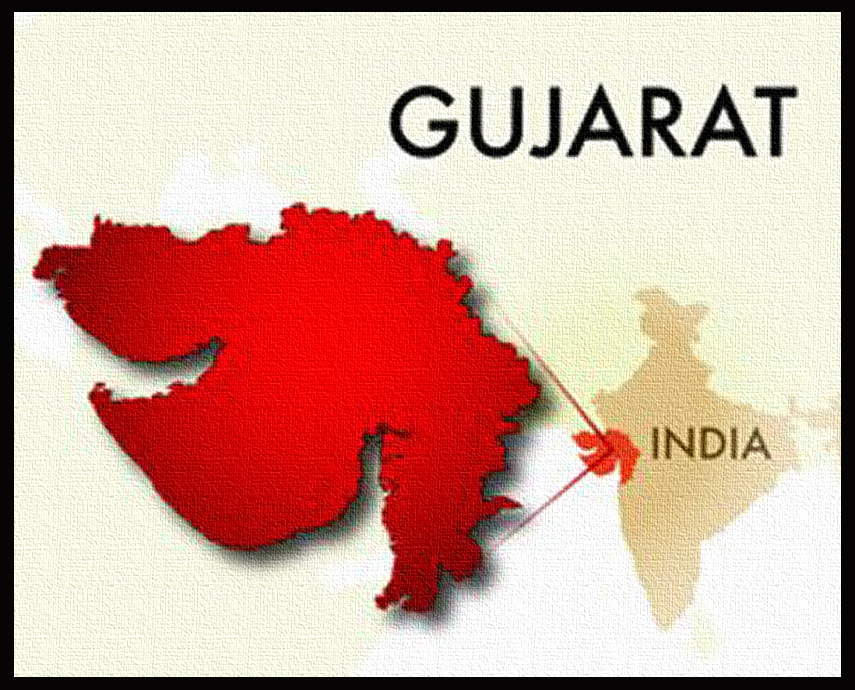 Sevya works with talented artisans all over India, so we thought it’d be fun to tell you a little more about each of those regions. This month we’re shining a spotlight on Gujarat! Located in the Northwest part of the subcontinent, this vibrant and diverse state of 60 million people has been an important commercial marketplace since ancient times. Gujarat has the longest coastline in India and its numerous coastal trading centers include Lothal, one of the world’s oldest seaports (2400 BC).
Sevya works with talented artisans all over India, so we thought it’d be fun to tell you a little more about each of those regions. This month we’re shining a spotlight on Gujarat! Located in the Northwest part of the subcontinent, this vibrant and diverse state of 60 million people has been an important commercial marketplace since ancient times. Gujarat has the longest coastline in India and its numerous coastal trading centers include Lothal, one of the world’s oldest seaports (2400 BC).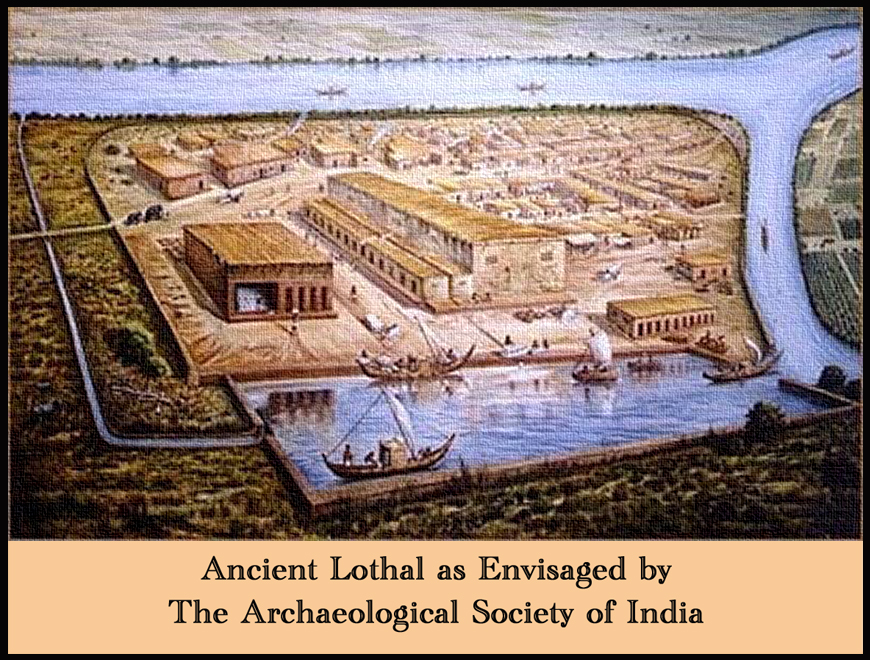 With such a long history of trade and commerce, it’s no surprise that Gujaratis are known for their entrepreneurial spirit. Written accounts by ancient trading partners from Greece, Rome, and Persia reference Guajarati’s tendency to be forward thinking and fearless when it comes to business. This trait is just as true today as it was a thousand years ago – Gujarat is one of the wealthiest states in India! Gujaratis are also known for their incredible skill at making beautiful handicrafts in the traditions of their ancestors.
With such a long history of trade and commerce, it’s no surprise that Gujaratis are known for their entrepreneurial spirit. Written accounts by ancient trading partners from Greece, Rome, and Persia reference Guajarati’s tendency to be forward thinking and fearless when it comes to business. This trait is just as true today as it was a thousand years ago – Gujarat is one of the wealthiest states in India! Gujaratis are also known for their incredible skill at making beautiful handicrafts in the traditions of their ancestors.
Handicrafts and Textiles
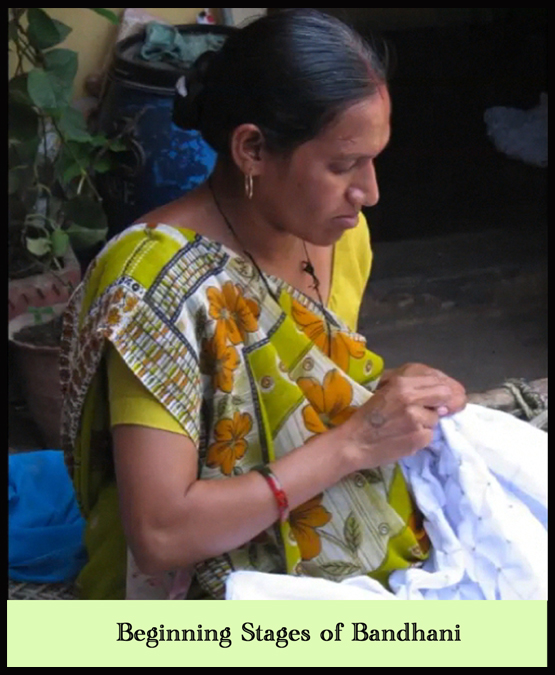 One of the best-loved art forms in Gujarat is Bandhani, which originated 5,000 years ago. The term Bandhani is derived from the Sanskrit word bandha, which means “to tie.” Bandhani is an extremely intricate form of tie-dye in which the fabric is tied very tightly with thread at several different points, according to a motif that is printed on the fabric using carved wooden blocks.
One of the best-loved art forms in Gujarat is Bandhani, which originated 5,000 years ago. The term Bandhani is derived from the Sanskrit word bandha, which means “to tie.” Bandhani is an extremely intricate form of tie-dye in which the fabric is tied very tightly with thread at several different points, according to a motif that is printed on the fabric using carved wooden blocks.  The motifs usually pay homage to nature: the beauty of the surroundings, flowers, birds, mangos The placement and quantity of the knots, as well as the way the cloth is tied, determines the pattern when the fabric is opened. Sevya works with women bandhani artists in villages throughout Gujarat to create our beautiful range of fair trade tie-dyed scarves and sarongs. Another popular art form in Gujarat is Patola Weaving. Also known as Ikat, this ancient dyeing technique patterns textiles by employing a resist dyeing process similar to tie-dye on either the warp or weft fibres prior to dyeing. This is a technique employed in only two other regions worldwide, the Okinawa islands of Japan and the village of Tenganan in Bali. Traditionally many families practiced the art of Patola, creating textiles for royalty and aristocracy. But today this technique is only practiced by the Salvi family, who keep the production a close-guarded secret. Sevya has an extensive range of wholesale fair trade ikat scarves, which showcase the mastery of India’s Ikat weavers
The motifs usually pay homage to nature: the beauty of the surroundings, flowers, birds, mangos The placement and quantity of the knots, as well as the way the cloth is tied, determines the pattern when the fabric is opened. Sevya works with women bandhani artists in villages throughout Gujarat to create our beautiful range of fair trade tie-dyed scarves and sarongs. Another popular art form in Gujarat is Patola Weaving. Also known as Ikat, this ancient dyeing technique patterns textiles by employing a resist dyeing process similar to tie-dye on either the warp or weft fibres prior to dyeing. This is a technique employed in only two other regions worldwide, the Okinawa islands of Japan and the village of Tenganan in Bali. Traditionally many families practiced the art of Patola, creating textiles for royalty and aristocracy. But today this technique is only practiced by the Salvi family, who keep the production a close-guarded secret. Sevya has an extensive range of wholesale fair trade ikat scarves, which showcase the mastery of India’s Ikat weavers
One of the most popular forms of embroidery in India 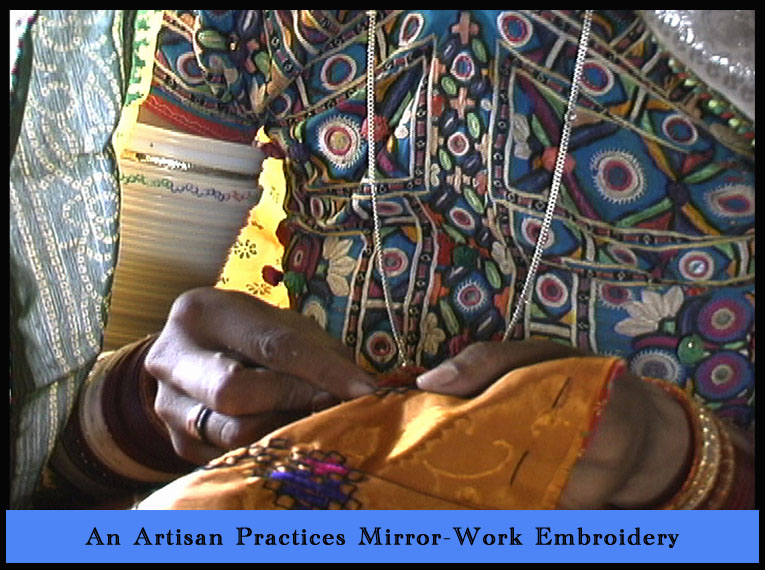 is shisha or Abhla Bharat embroidery, otherwise known as mirror-work, where reflective surfaces are embedded into a pattern. Shisha, the Persian word for “glass,” originated in 17th century India, and quickly gained traction in a variety of countries, including Iran, Afghanistan, Pakistan, China, and Indonesia. Amongst peoples living in Rajasthan, Gujarat, Madhya Pradesh and Haryana, the shisha is tied to the front door to ward off evil eyes. Originally, artisans used mica for the reflective surfaces, though beetles, tin, silver, or coins were not unusual; this practice was abandoned however in exchange for hand-blown glass. Today, most mirror-work is done by machine, but you can still find “antique” shisha with hand-blown glass.
is shisha or Abhla Bharat embroidery, otherwise known as mirror-work, where reflective surfaces are embedded into a pattern. Shisha, the Persian word for “glass,” originated in 17th century India, and quickly gained traction in a variety of countries, including Iran, Afghanistan, Pakistan, China, and Indonesia. Amongst peoples living in Rajasthan, Gujarat, Madhya Pradesh and Haryana, the shisha is tied to the front door to ward off evil eyes. Originally, artisans used mica for the reflective surfaces, though beetles, tin, silver, or coins were not unusual; this practice was abandoned however in exchange for hand-blown glass. Today, most mirror-work is done by machine, but you can still find “antique” shisha with hand-blown glass.
Festivals
Festivals are another important part of life in Gujarat. 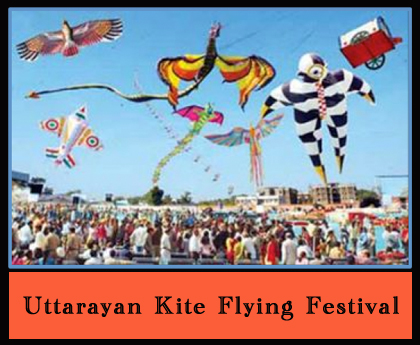 Though they celebrate over two thousand festivals a year, few compare with the whimsical beauty of Uttarayan. Each year on January 14th, thousands of kites take to the sky, their strings held by both Gujarat locals and visitors from all across the subcontinent, as well as a bevy of international countries. The festival of Uttarayan is held to celebrate the turning of winter to summer, known as Makar Sankranti, and is considered to be one of the most important harvest days in India. Throughout Gujarat, skies will be littered with kites from before dawn until late at night, but no area is as breathtaking as Ahmedebad, host of the International Kite Festival, who receives both amateurs and masters alike to join in the celebration.
Though they celebrate over two thousand festivals a year, few compare with the whimsical beauty of Uttarayan. Each year on January 14th, thousands of kites take to the sky, their strings held by both Gujarat locals and visitors from all across the subcontinent, as well as a bevy of international countries. The festival of Uttarayan is held to celebrate the turning of winter to summer, known as Makar Sankranti, and is considered to be one of the most important harvest days in India. Throughout Gujarat, skies will be littered with kites from before dawn until late at night, but no area is as breathtaking as Ahmedebad, host of the International Kite Festival, who receives both amateurs and masters alike to join in the celebration.
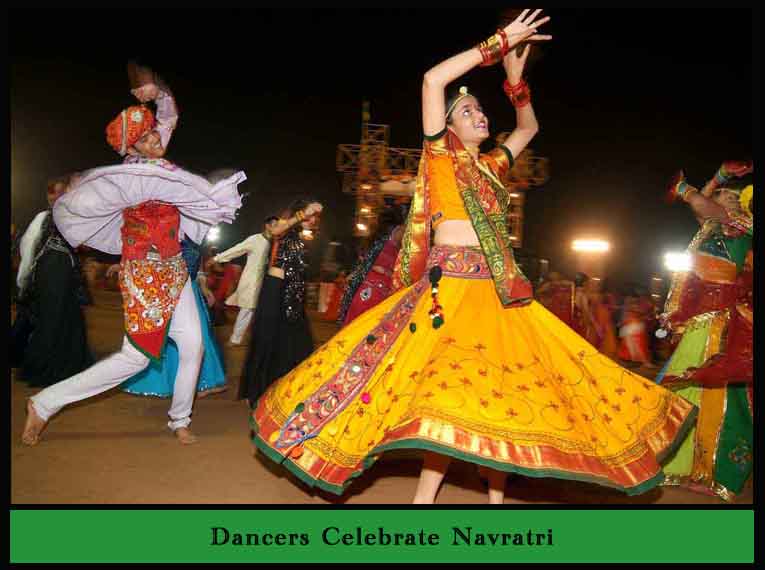 Another dazzling festival in India is the Navratri festival, held for ten days and nine nights in early October. Also known as Durga Puja, this epic festival celebrates the triumph of good over evil— dedicated to the annihilation of the demon Mahishasura by the mother goddess Durga, the festival also celebrates motherhood and the bonds of family, most trying to return home during the festivities. Navratri is celebrated by nightly feasts and dances, most popular being the traditional Gharba, in which two small wooden sticks (dandiyas) are hit by another person’s stick to another’s. The group doing the Gharba forms a circle in which there is a shrine of the goddess, along with a Garbo (earthenware pot) with a silver coin inside. Navratri today may include more disco dandiya, especially in large cities such as Mumbai. If you’re looking to celebrate this stunning festival, in 2014 Navratri will start on
Another dazzling festival in India is the Navratri festival, held for ten days and nine nights in early October. Also known as Durga Puja, this epic festival celebrates the triumph of good over evil— dedicated to the annihilation of the demon Mahishasura by the mother goddess Durga, the festival also celebrates motherhood and the bonds of family, most trying to return home during the festivities. Navratri is celebrated by nightly feasts and dances, most popular being the traditional Gharba, in which two small wooden sticks (dandiyas) are hit by another person’s stick to another’s. The group doing the Gharba forms a circle in which there is a shrine of the goddess, along with a Garbo (earthenware pot) with a silver coin inside. Navratri today may include more disco dandiya, especially in large cities such as Mumbai. If you’re looking to celebrate this stunning festival, in 2014 Navratri will start on  September 25th and end on October 3rd. In an explosive blast of color, Holi is one of the most exciting holidays in the Hindu calendar. Celebrated on the last full moon of the lunar month, people throw brightly colored powders at friends and strangers to revel in the arrival of spring. In addition to celebrating the renaissance of spring, Holi commemorates Krishna’s high-spirited pranks, as well as letting their inhibitions drop to simply play. One of the most important holidays in India, Holi has spread throughout the world as a celebration of love and color.
September 25th and end on October 3rd. In an explosive blast of color, Holi is one of the most exciting holidays in the Hindu calendar. Celebrated on the last full moon of the lunar month, people throw brightly colored powders at friends and strangers to revel in the arrival of spring. In addition to celebrating the renaissance of spring, Holi commemorates Krishna’s high-spirited pranks, as well as letting their inhibitions drop to simply play. One of the most important holidays in India, Holi has spread throughout the world as a celebration of love and color.
Diwali, or the “festival of lights,” is one of the most well-known Hindu festivals, as well as  one of the most significant. Diwali signifies the victory of light over darkness, knowledge over ignorance, hope over despair and good over evil. The main festival night typically falls between mid-October and mid-November, coinciding with the darkest new moon night of the Hindu Lunisolar month Kartik. Though the preparations for Diwali take days, on the festival night, Hindus dress up in their best clothes, light diyas (lamps and candles), and participate in family puja, or prayers, to Lakshmi, the goddess of prosperity. After the prayers, there are fireworks and a feast, as well as exchanging gifts with friends and family. Even though Diwali is the celebration most foreigners are familiar with, there is actually five days of the celebration: Dhanteras is the first day, in which cleaning and decorating are completed (as well as being a major shopping day); Naraka Chaturdasi is the second day, where colorful decorations called rangoli are made, and families prepare homemade sweets for Diwali, the third day; Padwa, the fourth day, celebrates spousal love, and the final day, Bhai Duj, celebrates the bonds between brother and sister.
one of the most significant. Diwali signifies the victory of light over darkness, knowledge over ignorance, hope over despair and good over evil. The main festival night typically falls between mid-October and mid-November, coinciding with the darkest new moon night of the Hindu Lunisolar month Kartik. Though the preparations for Diwali take days, on the festival night, Hindus dress up in their best clothes, light diyas (lamps and candles), and participate in family puja, or prayers, to Lakshmi, the goddess of prosperity. After the prayers, there are fireworks and a feast, as well as exchanging gifts with friends and family. Even though Diwali is the celebration most foreigners are familiar with, there is actually five days of the celebration: Dhanteras is the first day, in which cleaning and decorating are completed (as well as being a major shopping day); Naraka Chaturdasi is the second day, where colorful decorations called rangoli are made, and families prepare homemade sweets for Diwali, the third day; Padwa, the fourth day, celebrates spousal love, and the final day, Bhai Duj, celebrates the bonds between brother and sister.



